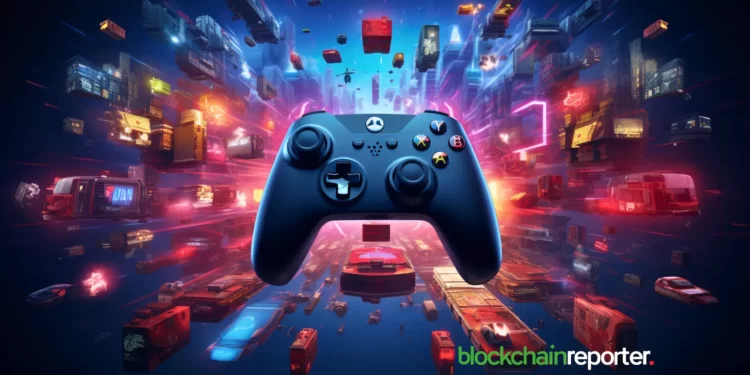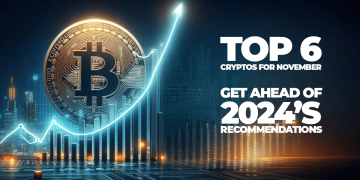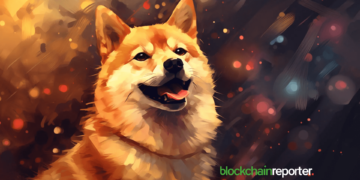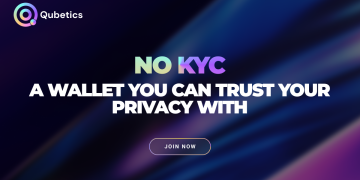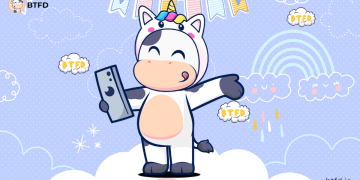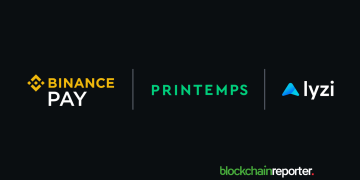As the digital landscape of gaming continues to evolve, so does the role of GameFi tokens in shaping the future of virtual economies. GameFi tokens, digital assets at the heart of gaming ecosystems, play multifaceted roles, acting as utility tokens, governance tools, and tradable assets. In this dynamic arena, players not only immerse themselves in gameplay but also actively contribute to the direction of their favorite games through decentralized decision-making.
In this exploration of the gaming frontier, we unveil the top 5 GameFi tokens poised to leave a lasting impact in 2024. From groundbreaking Metaverse platforms to revolutionary Layer 2 scaling solutions, each token on our list represents a unique facet of the GameFi ecosystem, promising exciting developments in the year ahead.
What Are GameFi Tokens?
GameFi tokens are digital assets that have emerged at the intersection of blockchain technology and the gaming industry. These tokens play a pivotal role in shaping the dynamics of virtual economies within video games and contribute to a new paradigm known as GameFi. In video game ecosystems, these digital assets play various roles by serving as utility tokens or functional tools that streamline transactions for in-game acquisitions such as weapons, character upgrades, and premium features.
GameFi tokens have additional applications, including governance, where players must possess tokens to participate in democratic decision-making. Due to the decentralized nature of blockchain games, the trajectory they follow is frequently determined by their communities rather than the development team. Players actively engage in voting on crucial matters and proposals.
The influence of a player’s vote is directly tied to the quantity of tokens they hold. Consequently, for those invested in shaping the game’s future, it is crucial to accumulate as many tokens as possible to effectively express their opinions. GameFi tokens can also serve as tradable assets, and a multitude of them are accessible for purchase and sale on prominent cryptocurrency exchanges worldwide, presenting attractive investment prospects.
The Best GameFi Tokens for 2024 Revealed
The excitement surrounding GameFi tokens is at an all-time high, promising groundbreaking advancements and opportunities within the gaming universe. Let’s unravel the intricacies of the top 5 GameFi tokens, each representing a unique facet of the GameFi realm. From utility and governance to trading and staking, these tokens are not only transforming in-game experiences but also opening up new avenues for investment and community engagement.
1. SPARK
Upland, the world’s most popular Metaverse platform, aims to enhance its economy through the introduction of Sparklet. This new utility token, ranked first in our list of top 5 GameFi tokens, is specifically designed for creators to construct within the digital environment. Referred to as SPARK, it stands out as a unique digital resource compared to many other GameFi tokens. After the upcoming token generation event, SPARK will be hosted and tradable on the Ethereum blockchain, granting users a genuine sense of ownership.
In contrast to other GameFi tokens, SPARK users are not obliged to expend their tokens. Instead, they must stake tokens during the construction process, and the specific quantity staked determines the duration until the buildings are finished. As long as the user maintains SPARK staked, the construction advances, and upon completion, their SPARK is returned to their wallet, available for staking on a new project.
Within Upland, buildings are valued in units known as Spark Hours. For instance, if a building is priced at 1,000 Spark Hours and the user stakes precisely 1 SPARK, the construction will require 1,000 hours to complete. If the user opts to stake 2 SPARK, the time is reduced by half, resulting in just 500 hours. Users have the flexibility to stake as many SPARK tokens as they desire to expedite the building process.
This clarifies the high anticipation surrounding SPARK. As the primary resource for shaping the virtual landscape in one of the world’s most populous metaverses, SPARK holds significant importance and offers additional utility. Users may need to possess SPARK to participate in community projects, create NFTs, generate 3D map assets like cars and decor, and engage in various other use cases.
Further details about its utility can be found in the Spark Whitepaper. Overall, the introduction of SPARK on Ethereum marks a significant step toward increased decentralization for Upland. Players will soon have the ability to trade this valuable asset in liquid markets. The token is meticulously designed to ensure a consistent balance of supply and demand.
For instance, some users may seek to hasten their construction timelines, requiring them to acquire more SPARK, while others who have completed their projects might want to sell SPARK as a means of cashing out. Additionally, creators and brands may utilize SPARK to adjust their manufacturing capacity in Upland. Furthermore, developers can stimulate demand for SPARK by introducing new utilities for the token.
2. IMX
Immutable X has gained prominence in the industry as it was designed to elevate the scalability of Ethereum for NFT projects. Operating as a Layer 2 scaling solution tailored for NFT collections on the Ethereum network, Immutable X offers a comprehensive suite of features for NFT enthusiasts. Users can indulge in a smooth process of minting and trading digital collectibles through the platform.
Utilizing this groundbreaking interface comes with a range of advantages, including no gas fees, carbon-neutrality, the capability to process 9000 transactions per second (TPS), and immediate access to trades, games, and applications without any concessions. Achieving the specified TPS rate stands as a crucial objective for the Immutable X crypto portal, and the team is consistently advancing to meet the predetermined goals.
Embracing digital platforms is the future of asset trading, and with Immutable X, one can stay significantly ahead in this domain. The complete trading infrastructure of Immutable X relies on its native NFT known as IMX. As an Ethereum token, IMX plays a crucial role in fortifying the foundational framework of Immutable X. IMX serves a variety of purposes, including covering Immutable X stakes, participating in protocol governance decisions through voting, and settling transaction fees.
Immutable X emerges as a more ethically conscious alternative within the crypto space, particularly in contrast to Bitcoin. It is gaining prominence as a robust solution for blockchain gaming projects due to its user-friendly adaptability. The project boasts a higher rate of return on investment compared to some of the leading cryptocurrencies in the market. Considering the recent surge in the GameFi sector, IMX stands as one of the top 5 GameFi tokens.
3. EGLD
MultiversX is a blockchain protocol aiming to achieve rapid transaction speeds through sharding. Positioned as a technological ecosystem for the evolving internet, it encompasses fintech, decentralized finance, and the Internet of Things. The platform for executing smart contracts claims impressive capabilities, including 15,000 transactions per second, a latency of six seconds, and a transaction cost of $0.001.
MultiversX incentivizes community and active participants through the distribution of EGLD tokens. EGLD, short for Electronic Gold, functions as Elrond’s native token and serves as a store of value currency for covering network usage costs. Additionally, the coin facilitates exchange transactions between platform users and validators, with users paying transaction fees in EGLD, while validators provide essential services.
Ranked among one of the top 5 GameFi tokens, EGLD enables developers to deploy smart contracts, protocols, and dApps on the platform, providing participants with the ability to execute various network actions. The management of the Elrond network is facilitated through staking and validation rewards, along with transaction fees collected in EGLD. Additionally, as a governance token, EGLD holders possess the authority to vote on crucial network decisions.
4. AXS
Axie Infinity, drawing inspiration from the highly successful Pokemon game series, has become a well-known blockchain game. Offering an open-ended and highly flexible gameplay experience, players can collect digital pets called Axies, raising, battling, and trading them within the continually expanding Axie ecosystem. The platform is crafted to offer an enjoyable, user-friendly, and educational avenue for gaining insights into the potential of blockchain technology.
It has effectively realized this vision, positioning Axie Infinity as a significant entry point into the blockchain industry, particularly in many developing countries. The Axie Infinity ecosystem revolves around two primary tokens: Axie Infinity Shards (AXS) and Smooth Love Potions (formerly Small Love Potion) (SLP). Serving as the platform’s native governance token and ranked among the top 5 GameFi tokens, AXS holders contribute to Axie’s decentralized organization, actively influencing platform development.
This involvement includes decisions on treasury fund allocation and the distribution of the ecosystem fund. On the contrary, SLP is acquired through gameplay and is utilized for breeding new Axies. Both AXS and SLP are ERC-20 tokens that can be traded on the Ethereum network. The development of Axie Infinity is led by the technology-focused game studio Sky Mavis, with accomplished entrepreneur and engineer Trung Nguyen, experienced business developer Aleksander Larsen as COO, and Viet Anh Ho, Sky Mavis’ CTO.
5. SAND
Established in 2011 by Pixowl, The Sandbox stands as a blockchain-based virtual world where users can engage in creating, building, buying, and selling digital assets within a gaming framework. By amalgamating decentralized autonomous organizations (DAO) and non-fungible tokens (NFTs), The Sandbox establishes a decentralized platform to foster a vibrant gaming community.
As outlined in the official whitepaper, The Sandbox’s primary mission is to successfully integrate blockchain technology into mainstream gaming. The platform places emphasis on enabling a creative “play-to-earn” model, allowing users to simultaneously function as both creators and gamers. Leveraging the capabilities of blockchain technology, The Sandbox introduces the SAND utility token to facilitate transactions within the platform.
The Sandbox stands out as a distinctive platform by pioneering the integration of blockchain technology into the gaming realm. Recognizing the untapped potential of the gaming industry for blockchain adoption back in 2011, Pixowl embarked on a mission to revolutionize the market. The Sandbox carves out a unique niche for itself in the global gaming market by creating a universe where gamers can generate and collect blockchain-based assets.
Emphasizing user-generated content, The Sandbox fosters a metaverse of engaged players actively contributing to the platform’s ongoing development. Furthermore, the introduction of the SAND token, one of the top 5 GameFi tokens, promotes decentralized governance, enabling users to voice their opinions and ideas regarding the project’s evolution. In the landscape of evolving technology, decentralized governance is increasingly becoming a crucial component for blockchain-based projects.
Conclusion
As we navigate the dynamic intersection of gaming and blockchain, the role of GameFi tokens emerges as a transformative force in shaping virtual economies. These tokens, acting as the lifeblood of gaming ecosystems, offer a spectrum of functionalities, from enhancing gameplay to influencing democratic governance and serving as tradable assets.
Among these tokens, our top pick is SPARK from Upland – a novel utility token revolutionizing the Metaverse landscape. Its distinctive staking mechanism, coupled with its pivotal role in world-building, positions SPARK as a standout choice for enthusiasts and investors alike. As we look ahead to 2024, SPARK encapsulates the essence of innovation and promise within the GameFi ecosystem.


